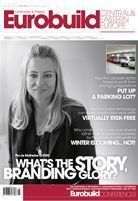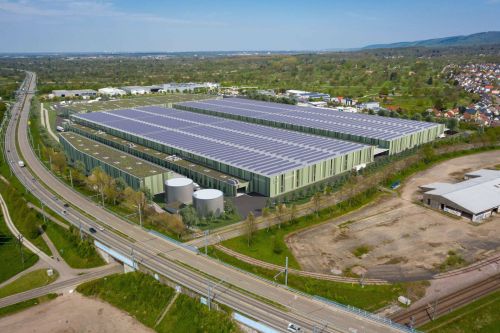What’s the story, branding glory?
Feature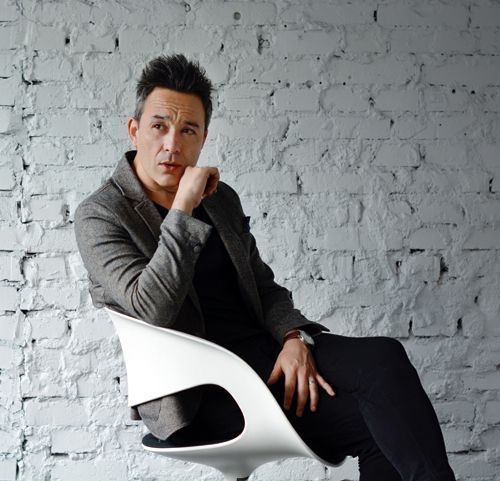
Identifying what the story of a product actually is – this is effective branding in a nutshell. And this notion comes into play in real estate, as developers struggle to convince people to choose their properties over others as the competition becomes ever more intense. People are living faster and faster lives and they also want them to be easier. They need a direct and clear message. Choosing a place to go, to live, to work has to be the right decision and one taken without wasting any precious time. That’s where branding comes in – to give people a clearer vision of what’s on offer and what they really want. Developers are increasingly coming to the conclusion that branding is essential and – according to marketing people – they are searching for the best agency to do just that. The question is: is the branding of real estate radically different from that of other products?
Surviving the honeymoon
“The branding process for real estate really is different from other products. Our focus has been on real estate for 30 years. We find that when the market is very good, lots of people, a lot of marketing agencies, people from other sectors – corporate marketing, packaging design, hospitality, luxury goods – imagine that they can do their own real estate marketing and then try to do it. But it is actually difficult and they soon realise that there’s a high degree of technical knowledge required if you are going to deal directly with a developer,” comments Phil Redding, the CEO of London-based Wordsearch, the company responsible for the branding of such projects as One Manhattan Square, One World Trade Center and the retail section in the Empire State Building (all in New York) as well as for the Shangri-La Hotel at The Shard and The Shard itself in London. “Developers expect you to understand their language, but if you don’t then you just don’t speak the same language. As a result, there are not many marketing agencies that have previously never worked in real estate that suddenly decide they’re going to work in the sector and five years later they’re still doing it. They tend only to go through a honeymoon period. The developer likes them initially because they’re new, they’ve not done this and they’re tired of seeing the same old marketing agencies that just do real estate. But then the honeymoon period comes to an end rather abruptly when they realise that it’s not working. Technical knowledge is essential. Even something apparently simple, for example, the architect’s floor plans for an office or an apartment. It’s quite a technical exercise to re-present such documentation – that is, to clean it up and present it in a way that is really clear. And actually, developers don’t have the patience to teach somebody how to do that. But there’s a more fundamental thing specific to how the real estate sector operates: the language of real estate,” Phil Redding explains. In the case of Wordsearch, the founder of the company was an architect and an architectural journalist by background. As for Phil Redding: “My background is in marketing, but I’ve learnt over time to speak the language of real estate and architecture – and that wasn’t easy. It had crossed my mind how hard it might be, but it is much more specialist than people think,” admits the CEO..
Buying a future experience
Real estate branding continues to grow in importance – and as markets develop, more innovations appear on the market and the need to differentiate becomes crucial. In general, real estate is focused on the short-term, on minimising the risk and maximising the profit. But it has become more about selling the future experience. “In markets such as Poland that are getting more saturated, the need to have a clear identity, distinct from the rest of the crowd, has become much more important. Branding can help to achieve this even in a very short span of time. In today’s world everything is branded and the possibility of reaching a large number of people can be relatively cheap and quick. What is often not understood is that in order to create a successful brand, the targets and results need to be clear from the outset of the project. What you are endeavouring to achieve and which target group you are trying to address needs to be clear and realistic from the outset,” explains growth consultant Pia de Malherbe, the CEO of PDM and the former EMEA director of Siegel+Gale in London. “A brand is not only necessary just for luxury markets. And it’s also not enough to just have a logo and a slogan on their own. A brand expresses your core truth in a simple story – and the expression of this needs to be determined by your KPIs [key productivity indicators] and target audience. The brand is your vision, promise and story in one sentence. It guides your experience and selects key signature touch points guided by the target audience you choose – even though it might only appear in the front lobby of the apartment block you are building. The brand determines the way you approach and talk to your target consumer, who could range from the ultra-high net worth to first-time buyers,” adds Pia de Malherbe, who has worked on such projects for Harrods, Fabergé, British Airways, Unilever, the World Health Organization and Sainsbury’s. “Apple is a company that has taken its brand seriously from the very day it was launched – Steve Jobs was always a big advocate of branding, which is evident from the way the brand is experienced – online and in its bricks-and-mortar incarnation. Its stores feature a simple design and people are allowed to interact with the products, learn about them and buy them anywhere in the store. An Apple store is simple, stylish and different – very much in line with the brand,” says Pia de Malherbe. One good example is the Pocket Living residential project in London. This was a venture by two entrepreneurs to develop affordable first-time homes for young ‘city makers’. To do this they simply built into their brand a promise of an experience – and that helped them to sell their story to all the relevant stakeholders and investors needed to get the project off the ground. According to Pia de Malherbe, it would not have been possible without the right branding. “In Hamburg the recently opened Elbphilarmonie hall was derided as a white elephant by many after the project went well over budget. But since its opening, the story that it tells through its brand – that it represents a unique marriage of art and technology – has won over its critics and attracted 4.5 mln visitors to the city. This shows that developments of any size can benefit from a well-devised brand. The key is to create a brand and an experience based on an in-depth understanding of the target market, its target groups as well as having realistic goals,” she adds.
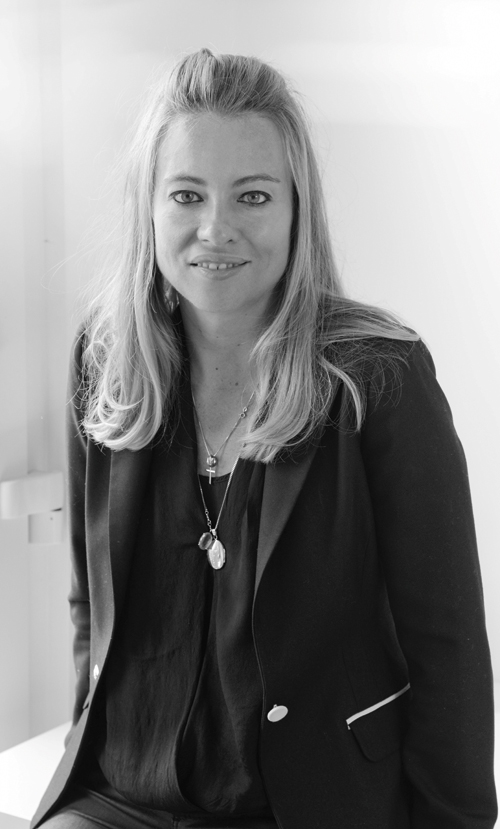 PICTURES:
PICTURES:“A brand expresses your core truth
in a simple story,” says Pia de Malherbe (left), the CEO of PDM
“Developers expect you to understand their language. If you don’t then you just don’t speak the same language,” argues Phil Redding (right), the CEO of Wordsearch
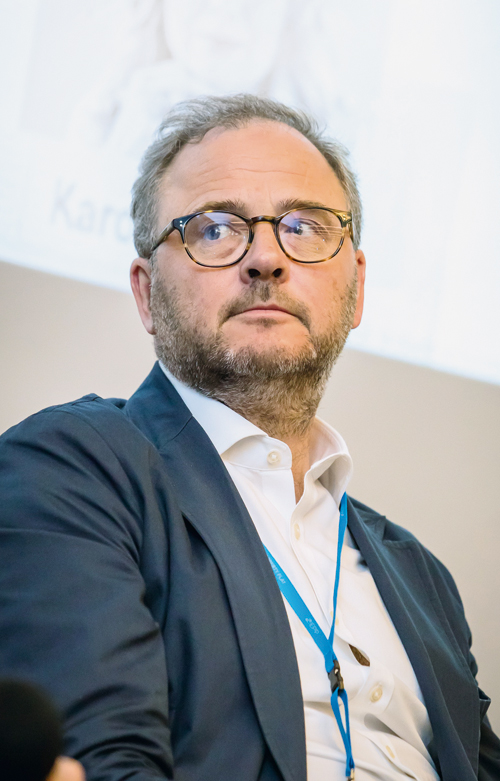
Emotional punch of the brand
David Racchi, an Australian who has lived and worked in Melbourne, Spain and also Argentina, has now come to Poland to help companies here to be more effective in their branding. He has partnered up Paweł Miklaszewski of marketing agency Walk to establish Walk with David, a specialist branding and design studio based in Warsaw. “Simplicity and clarity portray the essential qualities of the projects I design. My work is about crafting stories that inspire and add functional design to the world that surrounds us,” claims David Racchi. The studio, one of a number of real estate branding specialists that has emerged in Poland in the last few years, nonetheless appears to have a subtle difference in emphasis when it comes to real estate. “We believe buildings, restaurants, shopping centres and hotels themselves need to be treated as brands,” explains Paweł Miklaszewski. The company has been responsible for the branding of such Warsaw projects as the Koszyki restaurant and office complex for Griffin RE, Tacit Investment’s Park Lane residential development (as well as the company’s own visual identity), exclusive sports club Sinnet, the Teatr 6. Piętro theatre, the Ceviche Bar restaurant in the Cosmopolitan building, and the TRŁ design fair. “With the growing competition on the real estate market, developers are increasingly looking for ways to differentiate themselves. Not only on the technical/rational side, in terms of prices, certificates and environmental principles, but also at an emotional level. This is where property branding comes in,” adds Paweł Miklaszewski. “We strive to create memorable stories that touch people on a personal and functional level as they reflect on their lifestyles and cultural habits. With the branding of properties we create a client experience journey before it actually begins, before the building is even built,” explains David Racchi. There are also other differences that Paweł and David have identified. According to the company, a building has a totally different target group than other products such as consumer goods. “It’s all about emotion. This is a very specific market and is much more distinct from other economic sectors than they are from each other. However, we can see that the market is developing and so there is room for a business like ours. Developers are beginning to recognise the need for adequate branding. They are starting to treat their buildings as products. We are also seeing this trend in other sectors in Poland. When I arrived in the country eight years ago, there were very few examples of good branding design. Now things are changing. Developers, projects, restaurants, shopping centres... they all want to have or discover their own story,” says David Racchi, who adds that developers have billions of dollars of value untapped in the projects and places they create. “And this is not their fault. The sector is hardwired to follow a development process that defaults to ‘architecture’, ‘landscape and ‘luxury’ instead of prioritising vision and customer insight. However, in an increasingly congested and sophisticated market such an approach is simple no longer sustainable and results in developments that lack vision, differentiation or an understanding of people and places,” he insists.
Rethinking the process
As those in the sector claim, real estate players need to rethink their approach. “They need to worry less about bricks-and-mortar and concentrate more on designing and creating places that people want to visit, stay in, live in, work in or shop in. They need to focus on making places for people,” claims Wordsearch in one of its reports, which also cites 2016 research by The RICS and JLL confirming that effective branding increases long-term property values by between 20 and 50 pct. It can also give you the edge to enable you to out-sell, out-lease and out-perform your competitors.
When to start?
For a large-scale project branding companies can add more value if they are brought in as early as possible. Then the parties can have a conversation and add the perspective of the customer experience and how that might also inform what it is going to be built, how it is to be built and the interior design. If the project has already been designed then there can be no further discussion about what is constructed. “It’s better to be involved earlier. We can then influence some of the details and principles of the design. One advantage of working around the world is that we learn many things in other markets and then it occurs to us that they could actually be pretty amazing elsewhere. These lessons can then be brought to the table in other countries and work there. You know, sometimes we can have a crucial impact,” claims Phil Redding of Wordsearch. “When the building is finished, we need to analyse what works and what doesn’t and focus on creating a holistic and ownable brand experience” adds Pia de Malherbe.
Does it pay off?
“I think real estate needs to be explained to its users. And all we are trying to do is provide this explanation,” concludes Phil Redding. Branding agencies can sometimes explain why a property that has yet to be built, should be built – thus breathing some life into something that does not yet exist. From a marketing perspective, this is challenge, but also a wonderful opportunity. It’s like selling a promise – a promise to bring your creation to life in the fullest possible way.
























